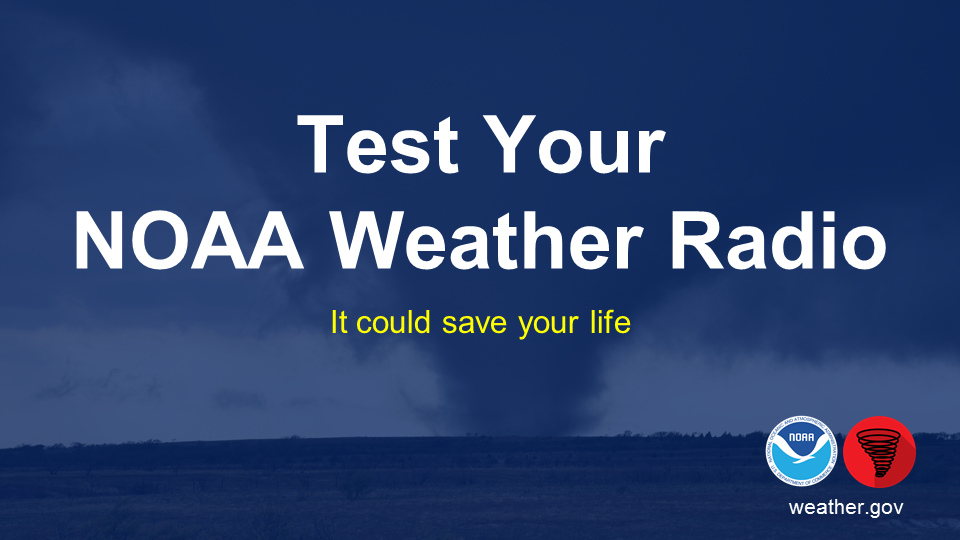Weather Warning Terms
The National Weather Service uses the words "advisory", "watch" and "warning" to alert you to potentially dangerous weather. Understanding these terms and knowing how to react can be a life saver.
Advisory
An advisory is issued when a hazardous weather or hydrologic event is occurring, imminent or likely. Advisories are for less serious conditions than warnings that cause significant inconvenience and if caution is not exercised, could lead to situations that may threaten life or property.
Watch
A watch means weather conditions are favorable for dangerous weather to occur. In other words, a "watch" means watch out for what the weather could do, and be ready to act accordingly. You may wish to alter or have a back-up plan for any outdoor activities or travel.
For events that come and go quickly, such as severe thunderstorms, tornadoes or flash floods, a watch means that the odds are good for the dangerous weather, but it not yet happening.
When a severe thunderstorm, tornado or flash flood watch is in effect, it means you should look for signs of dangerous weather and maintain access to the latest information. Sometimes a severe thunderstorm, tornado or flash flood can happen so quickly that warnings can't be issued in time.
For longer-lived events, such as floods or winter storms, a watch means that the event isn't an immediate threat. For either kind of event, a watch means you should keep up with the weather news and be ready to act.
A winter storm watch means it's time to prepare by stocking up on emergency supplies and making sure you know what to do if a warning is issued.
Warnings
For severe thunderstorms, tornadoes and flash floods, a warning means the weather event is imminent or occurring somewhere in the defined warning area and that people need to take shelter as soon as possible.
Outdoor tornado warnings are normally given by sirens. People indoors should listen to radios, TV or Weather Radio warnings to find out the latest information. Depending on local policy, other types of weather warnings may also broadcast via sirens. Check with local emergency management officials to learn about local siren activations.
A winter storm warning means it's not safe to travel or venture outside. If traveling, head for the nearest shelter.
How Alerts Are Issued
Before watches and warnings are issued, the National Weather Service, private forecasters, newspapers, radio and television normally try to alert the public to potential weather dangers.
Forecasters may begin issuing bulletins on winter storms up to three or four days before a storm hits.
But forecasters can't issue alerts for the danger of severe thunderstorms, tornadoes and flash floods that far ahead. Usually, the NWS Storm Prediction Center sends out alerts the day before dangerous weather is likely. Most television weathercasters highlight these alerts on the evening news the day before threatening weather.
Weather Radios
A weather radio is one of the best ways to stay tuned-in to dangerous weather. These radios receive broadcasts from the National Weather Service. The broadcasts are from local weather service offices.
Broadcasts include ordinary forecasts of several kinds, including for boating, farming, traveling and outdoor recreation as well as general forecasts for the area.
The stations also broadcast all watches and warnings. Some weather radios have a feature that turn on the radio automatically when a watch or warning is broadcast. Such "tone alert" weather radios are highly recommended for places where large numbers of people could be endangered by tornadoes or flash floods. These include schools, nursing homes, shopping center security offices, hospitals, and recreation areas such as swimming pools.
This National Weather Service page has information on weather radios, including a list of weather radio stations in each state.
Supporting the Deaf and Hard of Hearing Community
NOAA All-Hazards Radio receives National Weather Service warnings, watches, forecasts and other hazard information 24 hours a day.
While primarily an auditory alert system, many off-the-shelf All-Hazards Radios are available with visual and vibrating alarm features and simple text readouts for use by deaf or hard of hearing individuals. Special adaptors can also be added to some models of All-Hazards Radios by certain vendors. These adaptors can include, colorized warning lights to indicate the level of alert, and a Liquid Crystal Display readout of specific warnings.
All Hazards Radios are programmable state/country selections that screen out alerts from other areas and can be battery-operated and portable at home, work, school, or while travelling around the country.
This video has more information on how to configure the NOAA All-Hazards Radio and with adaptors for deaf or hard of hearing individuals.

